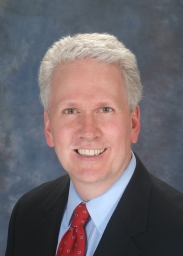It’s one of the questions I hear most frequently from clients: What should I do with questions I don’t want to answer?
Principle number one: Honesty is a must. Just bear in mind that responding to questions from audience members or reporters is not akin to taking the stand in a court of law. There, you must hew to the maxim, “Tell the truth, the whole truth, and nothing but the truth.”
Two of those principles remain in any professional exchange. You must tell the truth and nothing but the truth. No lies or dissembling permitted. But the whole truth? Nope. You are under no obligation to air dirty laundry just because someone inquires.
That said, you score points when you are respectful and provide a response that addresses the question as best as you are able. No spin. No stonewalling. No hemming and hawing.
That’s where the tried and true technique of “bridging” comes into play.
An Unfamiliar Term
- The vast majority of my clients have no clue about bridging when we begin a communications training program. It’s not a term or a technique most people know or employ when confronted with challenging questions.
Think of it using this construct:
Question –> Acknowledgement –> Bridge –> Message
Let’s break it down step by step:
- The question comes from the audience member or reporter. That’s where their role ends.
- The acknowledgment comes from you. You are in essence telling your interrogator, “I hear you” and “I understand the issue you are concerned with.” Never omit this step; it reinforces your commitment to respond, helps build a bond with them, and prevents you from being accused of spin.

- The bridge is a transitional phrase that paves the route from your acknowledgment to a message-driven response. I’ll get to some examples in a moment.
- Your message is where you want to go when replying to every single query. That’s right, your goal is always to transmit the segment of your message that best addresses the issue at hand.
Potent Phrases
Now, for some of those transitional segues you might utter:
- “Let’s look at the big picture…”
- “I can best answer that by telling you…”
- “It’s also important to remember…”
- “Let me give you an example…”
By no means are these the only words to use. I suggest that you give it some thought and develop a handful of expressions that are comfortable for you, and that sound like words that would come from your mouth. Write them down and use them as you practice Q&A prior to forthcoming presentations and media interviews.
It Takes Effort and Planning
The bridging technique requires some persistent practice. We are not accustomed to talking like this in everyday conversations (though I will reveal that the process works well in personal situations, too; please don’t tell my wife).
It is also important to point out that when you acknowledge your inquisitor’s question, it does not connote agreement. Far from it. Stick to your viewpoint. Don’t cede an inch. All you are saying in your reaction is “I hear your question and I respect it.”
Next, diplomatically move away from the contentious question with that transitional bridging phrase like the examples listed above. This leads you directly into your message.
One integral aspect of bridging: You must immediately follow your transitional phrase with the part of your message that most seamlessly addresses the relevant issue. Don’t hesitate. Don’t retreat by acknowledging again. Don’t proffer another bridging phrase. This method is a smooth way to get things back on the track on which you choose to travel.
I should reiterate that bridging needs to be used only when the questions are difficult or confrontational. You will not need to employ it in most situations where they are routine or friendly.
When the questioning becomes hostile or off-point, you must be ready to deal with the heat. Bridging can help you get there.


Recent Comments